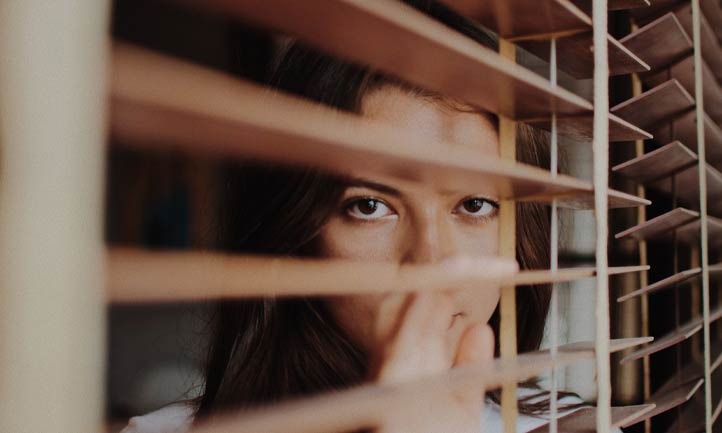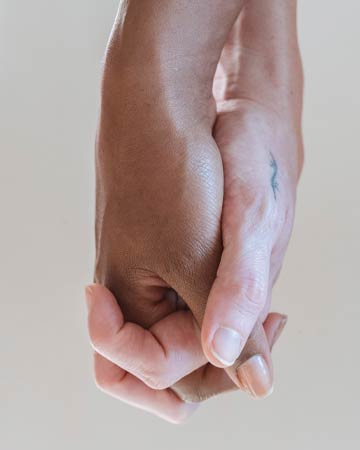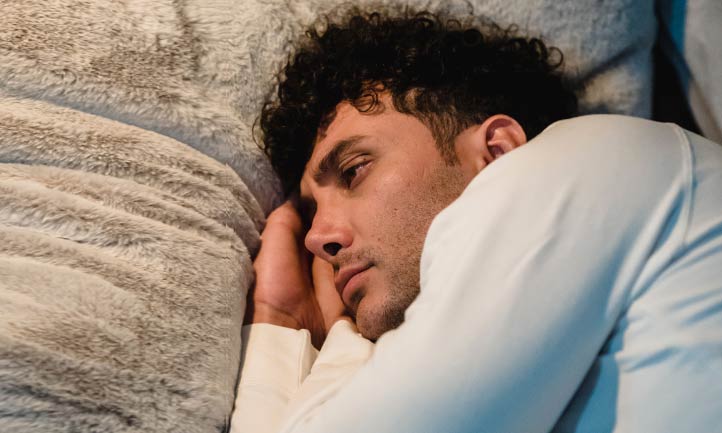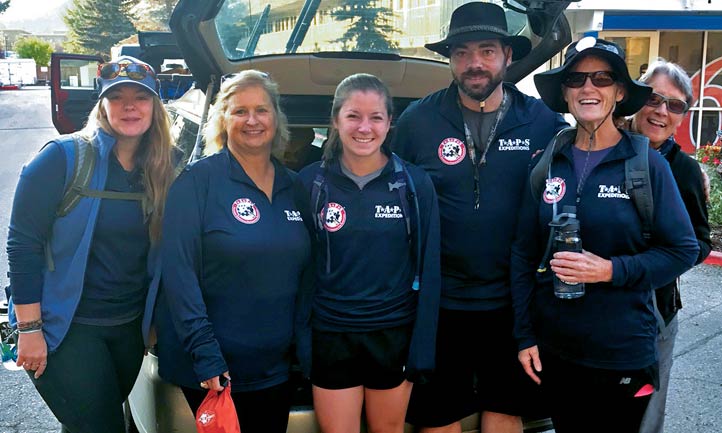Breaking Away from Loneliness
Author: Emily Munoz
Grief is inherently about interrupted connection. We are separated from someone we love. Loneliness, then, is logical. I just didn’t expect it to show up, years after the searing had turned to scarring. When it did, it was because, in my early grief, I leaned so much into the hope that the universe still held joy and purpose for me, that eventually this would all make sense. But loneliness showed up, clutching and persistent, exacerbated by widening divergences between what I saw as the richly layered, purposeful lives of others and my hollow trajectory as a childless, pathologically busy, urban single. (That’s also the world’s worst online dating headline.)

I thrive on being engaged and involved, but I also need solitude to recharge. Yet slowly my ability to distinguish between soul-nurturing solitude and creeping “aloneness” started to degrade. Instead of recharging, I was retreating. And I felt guilty about it: I was ashamed for living in a strange half-light, for not making connections that let me be all in. That’s not, as the French novelist Emile Zola said, "What I came to do." I came to live out loud. I want an abundantly textured life. Our loved ones’ sacrifices require it.
Grief is, in many ways, the pain of separation. This is often exacerbated by the body’s primitive desire to hide and isolate or to change environments completely. As we process, we are self-referential. We have to turn inward, to curl up into our pain. When we are ready to turn outward, we’re faced with figuring out who and what is still there. As Jim Lovell, commander of Apollo 13, is heard saying in the flight loop transcript, “Tell me what on the ship is still good.”

Every time we emerge from the fog, we’re checking to see what parts of our lives are consistent. Who has moved? Who’s gotten married? Whose kids have graduated? Who can I still relate to? Who isn’t frightened by my vulnerability? Who has enough space for part of my burden? Who won’t have to get a babysitter if I want to go to the movies with someone? Who can take time off work without financial risk? Will I have to wear real pants? Do I even have any real pants?
If grief is about separation, it stands to reason that healing is about integration and connection. It’s about “anti-loneliness.” But the more I healed from the pain of loss — the more I stitched my life back together, the more I understood the second- and third-order effects of what happened to me. As I was healing in the direction I needed to, the rest of the world didn’t stop and wait for me as I tried to claw my way back to a path that wasn’t mine anymore. I did make my way back to the land of the living, but I didn’t expect to be lonely there.
The paradox of loneliness is that it’s universal. Everyone has been, or will be, lonely. It’s something we can all understand, even if it manifests differently for each of us. The sharp and bitter grief of child loss may leave parents feeling like strangers in relationships and around other families. Children can experience loneliness as feeling different, excluded. Single parents lose hope of having adult conversations — much less relationships — and are hit with the loneliness of a quiet house, whether it’s when the bus leaves for elementary school, college, or basic training.
Loneliness, having hidden behind the closed physical and emotional doors for so long, is now being viewed as a widespread and serious health concern. A 2018 nationwide study by health insurer Cigna found that nearly 50 percent of 20,000 respondents considered themselves lonely. This is not situational loneliness. It’s more than having one’s feelings hurt or feeling sad for a few hours to a few days. This loneliness is persistent and often debilitating. Research shows that it can be as damaging to one’s health as smoking 15 cigarettes a day. It increases the risk of heart disease, substance use and abuse, and a host of other diseases and disorders.

This means that the battening down of the emotional hatches — whether it’s the result of elected isolation or unintentional disconnection — is not good for our physical and emotional health. Both isolation (having few relationships or infrequent contact with others) and loneliness (feeling alone or disconnected) present significant health risks. Face-to-face interaction improves mood and immune system functioning, lowers the risk for disease, and improves feelings of connection to a community.
What are some ways to fight feelings of loneliness?
We have suggestions that can help fight feelings of loneliness, but the most important thing to remember is: If you feel like you don’t fit in or that life has left you behind, you are not the only one. You do not have to be lonely in your loneliness. Instead, you can use the feelings of wanting to belong and share experiences and adventures to bridge the gap to others who are feeling the same way. Allowing yourself to feel vulnerable about your loneliness may be the most important way to drive it away.


At TAPS, we often say that grief changes our address books. As some people stand with us, others drift away. This analogy isn’t about asking you to tear out pages or mark out names. In fact, our charge in our grief is to face the feelings of loneliness and seek out the connections that inspire us, that make us better. Our charge is to use what we have learned in our pain and isolation to add to our address book — to reach out and ask people into our lives. Here are 10 ways to get started.
1. Find a cause. Sebastian Junger, author of Tribe, explains that the feeling of purpose that results from active engagement in a cause can have positive effects on mental health. Junger further explains how the dynamics of shared mission and unity contribute to these improvements. When we don’t feel needed, we lose direction, focus, and self-worth. If you don’t think there’s anyone who needs you, look again. Volunteer opportunities abound, and we all thrive when we feel like we’re a part of something.
2. Resist passive social media scrolling. Social media, when used in certain ways, can deepen your connections with people. If you’re using social media, use it as a communication tool, not a comparison tool.
3. Recognize the difference between a rut and a routine. A functional routine sets you up to feel good about your day — it holds a great deal of potential energy and feels like emotional scaffolding on which you can construct a good day. If you’re in a rut, on the other hand, you may feel defeated or stuck. Once you identify what parts of your life feel like movement and which parts feel like going through the motions, shift away from doing things that don’t nourish your soul just because that’s what you’ve always done.
4. When you’re with people, put your phone away. On a vacation with friends, we all agreed not to have our phones at the table after food was served. If we broke the rule, we had to donate to charity. Not only did it build community and accountability, but it also felt great to step away from a habit that didn’t connect us as people or to the world around us.
5. Identify what’s holding you back. There are things that we all keep in our back pocket as ways to put off healing and connection, even though it’s what we so desperately need, want, and deserve. For me, it was a messy home — an apartment that was always the task hanging over me that I “should do” before I did anything else — and that prevented me from welcoming others in. If it’s an obstacle like that, put on your jet pack and free yourself from what is holding you back.
You can’t dedicate space to connection if you don’t have any in your life, so the same thing applies to your schedule. If you keep yourself so busy that you can’t connect in a way that helps you feel less lonely, something has to give. It isn’t easy to take time for yourself, and unless you have the space to take it — mental, physical, emotional, professional — it’s unlikely to happen. Evaluate where you can carve space, and follow through.
6. Leave your house. Go to the park. Go to a coffee shop. Expand your world just a little. Start walking around the block every afternoon.
7. Move more. Join Team TAPS or a local running, walking, or cycling club, and learn how to find community through healthy movement. Invite friends over, roll out some mats, and cue up a yoga or Pilates workout on your TV.
8. Seek out others with similar interests. My local coffee shop has a Tuesday night men’s knitting circle. If there are places with a Tuesday night men’s knitting circle, there will be someone around you who has at least one interest similar to yours. Drag a friend with you. Start a book club. If you invite someone to do something and he or she doesn’t want to come, offer another option. Say yes when someone invites you.
9. Talk to people during every interaction. Say hello to people walking their dogs. Call a cashier by his or her name. Get to know the people who are in your neighborhood and build a sense of being seen and known. Research shows that it isn’t necessarily the heart-to-heart connections that stave off the effects of loneliness. Casual connections help too.
10. Use the power of your TAPS family. If you are new to your loss, these may seem impossible goals. But know that the time will come when making steps in this direction will not only be possible, but desirable. TAPS will be there each step of the way and is a safe space to take those first steps. Through our Care Groups, health and wellness programming, seminars, TAPS Togethers, our Sports and Entertainment program, Helpline, and more, you always have a family who sees you where you’ve been, where you are, and where you want to go.
Emily Muñoz is the Program Innovation Director at TAPS. She facilitates activities offering a healthy and active healing path for survivors. Emily came to TAPS following the death of her husband in 2005. She is the surviving spouse of CPT Gilbert A. Muñoz, U.S. Army 7th Special Forces Group.
Photos: TAPS Archives, Pexels and Unsplash
